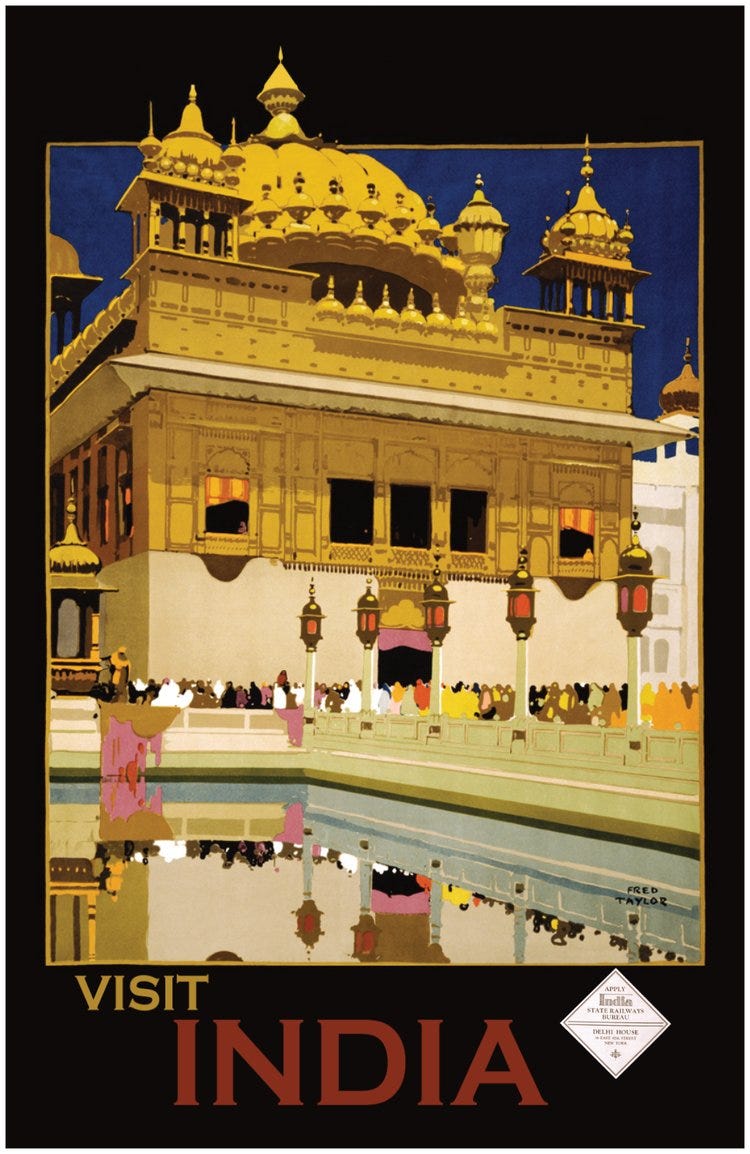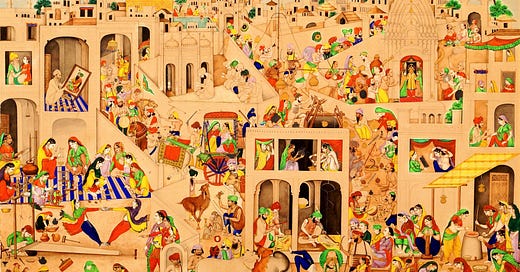Welcome to the Brown History Newsletter. If you’re enjoying this labor of love, please do consider becoming a paid subscriber. Your contribution would help pay the writers and illustrators and support this weekly publication. If you like to submit a writing piece, please send me a pitch by email at brownhistory1947@gmail.com.
Don’t forget to check out our SHOP and our Podcast.

Punjabiyat: The Evolution of Punjabi Identity
The partition of British India was proposed along religious lines, dividing the regions of Punjab and Bengal into a Muslim homeland (Pakistan) separate from Hindu-majority India. The movement to identify by religion over ethnicity quickly seized Punjabi society thanks to the efforts of the Muslim League. But some Punjabi Muslims stood firmly against this – Muslims like Khizar Hayat Tiwana (1900–1975).
Tiwana served as Premier of Punjab Province between 1942 and 1947. A member of the secular Unionist party, Tiwana staunchly opposed the creation of Pakistan: to him, his cultural identity was just as important as his religion. He once remarked to Muhammad Ali Jinnah, “There are Hindu and Sikh Tiwanas who are my relatives. I go to their weddings and other ceremonies. How can I possibly regard them as coming from another nation?”
Tiwana refused to turn against his Hindu and Sikh compatriots despite intimidation from the Muslim League. So great was his dedication to avoiding partition that he tried to convince the British to create a Punjabi state independent from both India and Pakistan. Of course, he couldn’t turn the tide of support for the Muslim League, and Punjab was brutally partitioned in August 1947.
The former Prime Minister of Punjab never accepted his people’s division. Decades later, when East Pakistan became the independent country of Bangladesh, Tiwana commented, “I still think a Punjabi Muslim has more in common with a Punjabi Hindu or Sikh than with a Bengali (or any non-Punjabi really) and I think the separation of East Pakistan proved that.”
Tiwana’s unwavering position reflects a commitment to Punjabiyat, an increasingly popular phrase that roughly translates to ‘being Punjabi’ or ‘shared Punjabi identity’. Punjabis were scattered across various faiths, castes, classes, and dialects, but for Tiwana, these weren’t enough to divide people who shared a unique culture. It's difficult to claim that a unified concept of Punjabiness exists today – modern Punjabi identities seem inextricably bound to religion or nationality.
I want to explore the factors that shaped Punjabi identity and how far this unified Punjabis of the past. I also want to see what modern Punjabi identities look like within a cultural group divided across a border, and now spread across the world. Have we lost a vital way of viewing ourselves, or was it never really important to us?






